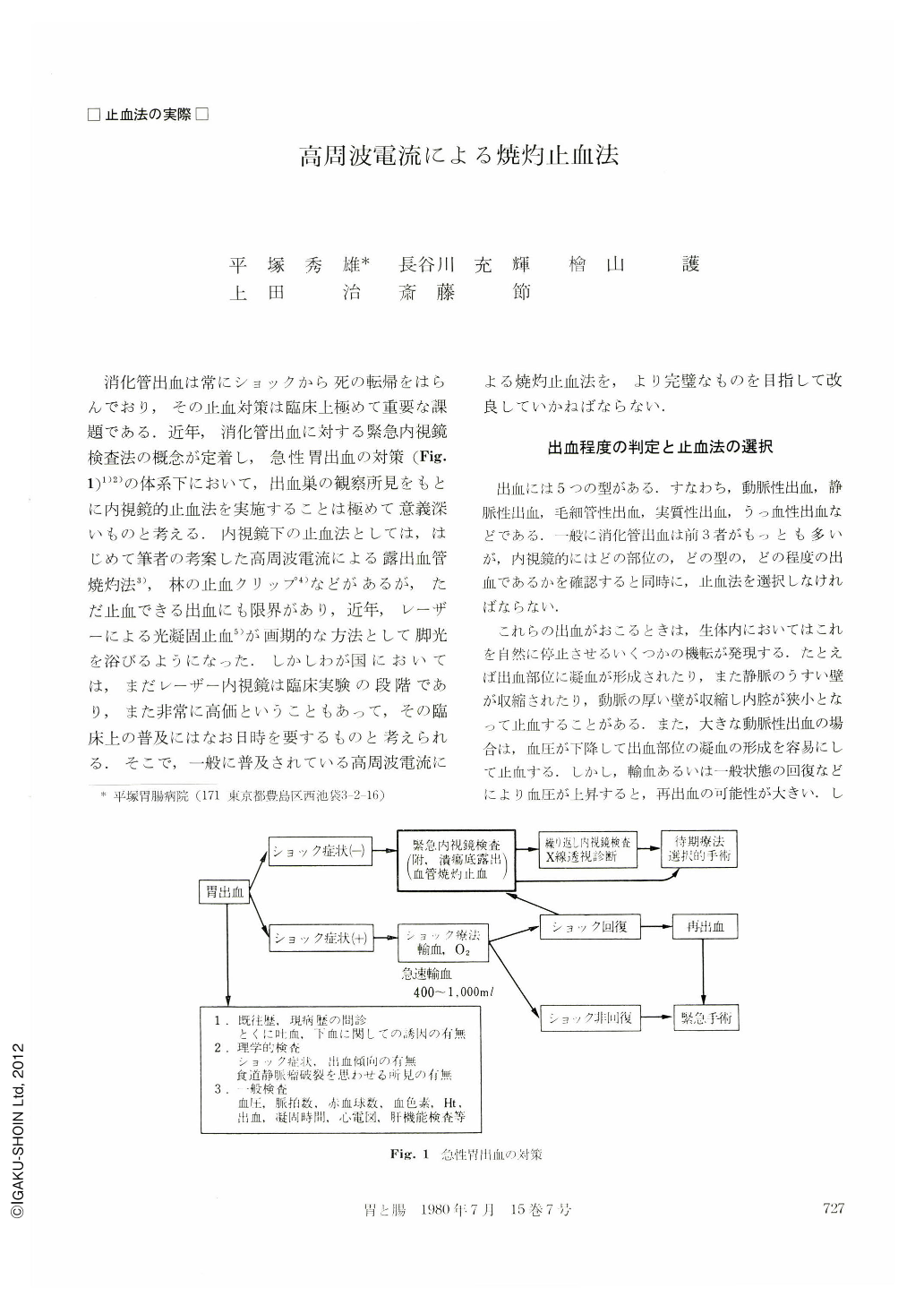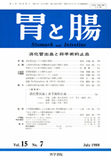Japanese
English
- 有料閲覧
- Abstract 文献概要
- 1ページ目 Look Inside
- サイト内被引用 Cited by
消化管出血は常にショックから死の転帰をはらんでおり,その止血対策は臨床上極めて重要な課題である.近年,消化管出血に対する緊急内視鏡検査法の概念が定着し,急性胃出血の対策(Fig. 1)1)2)の体系下において,出血巣の観察所見をもとに内視鏡的止血法を実施することは極めて意義深いものと考える.内視鏡下の止血法としては,はじめて筆者の考案した高周波電流による露出血管焼灼法3),林の止血クリップ4)などがあるが,ただ止血できる出血にも限界があり,近年,レーザーによる光凝固止血5)が画期的な方法として脚光を浴びるようになった.しかしわが国においては,まだレーザー内視鏡は臨床実験の段階であり,また非常に高価ということもあって,その臨床上の普及にはなお日時を要するものと考えられる.そこで,一般に普及されている高周波電流による焼灼止血法を,より完壁なものを目指して改良していかねばならない.
Although about ten years have already passed since we developed the endoscopical hemostatic method by high frequency current, this method is still being continually used in clinics for lack of a more perfect endoscopic control method of hemorrhage.
Recently, a lazer endoscopical hemostasis has attracted public attention, therefore, the endoscopic control method of bleeding is again about to come into the limelight. But it will take much time untill it becomes popular because the lazer endoscopy is still in the clinically experimental stage and the lazer endoscope instrument itself is very expensive.
In regard to the above, we need take a new look at and investigate the hemostatic method by high frequency current which is in daily use.
Hence, we have improved the endoscopic hemostasis by high frequency current method by a waterdripping system coagulation electrode and obtained an unexpectedly good result. So we would like to apply this method to many cases and to work on improving it.

Copyright © 1980, Igaku-Shoin Ltd. All rights reserved.


